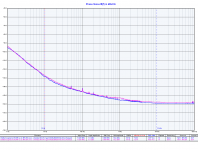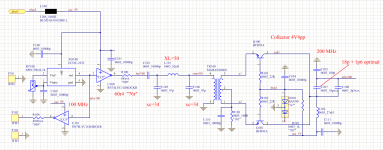Guys we will just need to wait some months as shipping and postal service loose many packets those days, some pists...
Guys we will just need to wait some months as shipping and postal service loose many packets those days, some pists...
IMHO there's no point in delaying the GB.
At least nothing stop us making a list of interested people so Andrea can plan the mfg accordingly.
Then, when the moment will come, if you (or others) still have postal issues, then you can delay your shipment.
my2c
Sure making a list if the experiments on the new discroll are over is fine. But I will be surprised if it Andrea fires the production before one or two months minimum, I'm not him, but I can imagine.
It's not about me, it's just in this particular moment and certainly for many weeks if not couple of months minimum, postal service in Europe, and frankly everywhere have poblems because postmen and guys in the postal building catch covid for non essential needs... You're italian you should know.
Just my two cents, but making, purchasing parts, from multiple countries, suppliers, means risks for others. Don't think because it's beginns to calm down that it is finish... it is NOT.
It's not about me, it's just in this particular moment and certainly for many weeks if not couple of months minimum, postal service in Europe, and frankly everywhere have poblems because postmen and guys in the postal building catch covid for non essential needs... You're italian you should know.
Just my two cents, but making, purchasing parts, from multiple countries, suppliers, means risks for others. Don't think because it's beginns to calm down that it is finish... it is NOT.
Last edited:
... You're italian you should know.
Call me lucky, but where i live the postal service is fine and dandy. no packages was lost and i am currently ordering almost every other day from various european supplier.
but let's make Andrea take all the considerations. Mine was just a suggestion.
Don't mistake postal services for individuals & trucks and organised logistic centers/ports for professionals with big volumes... not the same ! Cause these days purchasing for non essential personal needs is irresponsible cause it's a great accelerator for the spread. Just saying...

I'd like to share a little gadget I used to help stabilize the temperature and make it easier on the circuit.
The silicon sleeve I bought from aliexpress fits nicely over the heating tube and can easily withstand 250C.
With the sleeve, the temperature is more stable, Q1 and U1 runs cooler than without.
Here's the link: 2PCS The silicone sleeve for Trianglelab 3D Printer Hotend V5 V6 HOT END heat block upgrade kit|0.4mm nozzle|heating block|nozzle 0.4mm - AliExpress
Last edited:
Hi Andrea,
Would it be possible to share mouser parts lists for the new boards? This will make it a lot easier for us all with ordering the components.
Regards,
Would it be possible to share mouser parts lists for the new boards? This will make it a lot easier for us all with ordering the components.
Regards,
Hi Andrea,
Would it be possible to share mouser parts lists for the new boards? This will make it a lot easier for us all with ordering the components.
Regards,
We are waiting for the final board to be assembled and tested the last time, then I will start the new GB and I will shared the BOM of the new oscillators and frequency doublers.
Frequencies available of the new oscillators will be (only SC-cut 3d overtone crystals):
- 5.6448 MHz
- 6.144 MHz
- 11.2896 MHz
- 12.288 MHz
- 22.5792 MHz
- 24.576 MHz
Frequency doublers:
- 5.6448 to 11.2896 MHz
- 6.144 to 12.288 MHz
- 11.2896 to 22.5792 MHz
- 12.288 to 24.576 MHz
- 22.5792 to 45.1584 MHz
- 24.576 to 49.152 MHz
Hi Andrea,
Good news - I do indeed look forward to hearing & seeing more of the designs you (and your "collaborators") come up with ...
Just thinking here that a suggestion could be to add a 49 - > 98 MHz doubler so as to make it possible to use your oscillators with the ES9038 (the "clock loop lock" feature of the ES9038??
Cheers,
Jesper
Good news - I do indeed look forward to hearing & seeing more of the designs you (and your "collaborators") come up with ...
Frequency doublers:
- 5.6448 to 11.2896 MHz
- 6.144 to 12.288 MHz
- 11.2896 to 22.5792 MHz
- 12.288 to 24.576 MHz
- 22.5792 to 45.1584 MHz
- 24.576 to 49.152 MHz
Just thinking here that a suggestion could be to add a 49 - > 98 MHz doubler so as to make it possible to use your oscillators with the ES9038 (the "clock loop lock" feature of the ES9038??
Cheers,
Jesper
I attach the phase noise plot of the old Driscoll oscillator (TWTMC-D), measured with 5V and 6V power supply without oven.
Is this the "first" design coming out of this thread where boards and crystals was offered and sent out to buyers (I got a set)?
//
D
Deleted member 537459
I attach the phase noise plot of the old Driscoll oscillator (TWTMC-D), measured with 5V and 6V power supply without oven.
Noce job!
I know you were considering to do pre-built boards, is that still on the cards?
Yes, finished boards will be available for the new oscillators and frequency doublers, not for the older version like TWTMC-C, TWTMC-D, TWTMC-P and son on.
Is this the "first" design coming out of this thread where boards and crystals was offered and sent out to buyers (I got a set)?
//
Older versions are still available as bare boards and crystals, no finished oscillators.
Hi Andrea,
Good news - I do indeed look forward to hearing & seeing more of the designs you (and your "collaborators") come up with ...
Just thinking here that a suggestion could be to add a 49 - > 98 MHz doubler so as to make it possible to use your oscillators with the ES9038 (the "clock loop lock" feature of the ES9038??
Cheers,
Jesper
I'm not sure that the circuit used in the frequency doubler will be suitable for 100 MHz, anyway we will test it.
This here works quite nicely from 100->200 MHz.
The next stage 200MHz->400 MHz does not work at all.
I'm working on a simpler, single ended design.
Signal source is a CMOS SC crystal oven (Digikey) and this here
is intended for ham radio purposes. Phase noise is probably
as good as it gets, at least for the doubler. I cannot easily measure
phase noise at 100/200/400 MHz without spending good will
points at a customer's.
regards, Gerhard
The next stage 200MHz->400 MHz does not work at all.
I'm working on a simpler, single ended design.
Signal source is a CMOS SC crystal oven (Digikey) and this here
is intended for ham radio purposes. Phase noise is probably
as good as it gets, at least for the doubler. I cannot easily measure
phase noise at 100/200/400 MHz without spending good will
points at a customer's.
regards, Gerhard
Attachments
- Status
- Not open for further replies.
- Home
- Source & Line
- Digital Line Level
- The Well Tempered Master Clock - Building a low phase noise/jitter crystal oscillator


